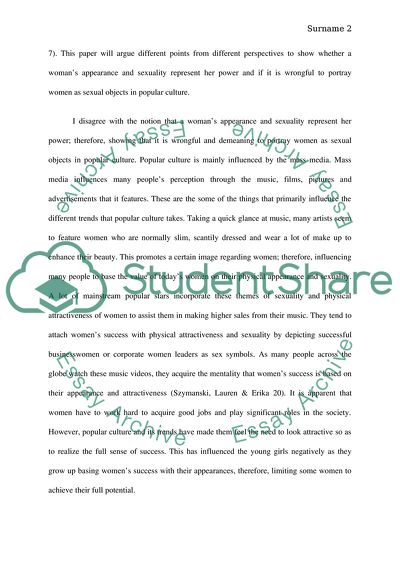Cite this document
(Sexualized Imagery of Women in Popular Culture Essay, n.d.)
Sexualized Imagery of Women in Popular Culture Essay. Retrieved from https://studentshare.org/gender-sexual-studies/1810329-a-womans-appearance-and-sexuality-represent-power-hence-there-is-nothing-wrong-with-the-sexualized-imagery-of-women-in-popular-culture
Sexualized Imagery of Women in Popular Culture Essay. Retrieved from https://studentshare.org/gender-sexual-studies/1810329-a-womans-appearance-and-sexuality-represent-power-hence-there-is-nothing-wrong-with-the-sexualized-imagery-of-women-in-popular-culture
(Sexualized Imagery of Women in Popular Culture Essay)
Sexualized Imagery of Women in Popular Culture Essay. https://studentshare.org/gender-sexual-studies/1810329-a-womans-appearance-and-sexuality-represent-power-hence-there-is-nothing-wrong-with-the-sexualized-imagery-of-women-in-popular-culture.
Sexualized Imagery of Women in Popular Culture Essay. https://studentshare.org/gender-sexual-studies/1810329-a-womans-appearance-and-sexuality-represent-power-hence-there-is-nothing-wrong-with-the-sexualized-imagery-of-women-in-popular-culture.
“Sexualized Imagery of Women in Popular Culture Essay”, n.d. https://studentshare.org/gender-sexual-studies/1810329-a-womans-appearance-and-sexuality-represent-power-hence-there-is-nothing-wrong-with-the-sexualized-imagery-of-women-in-popular-culture.


